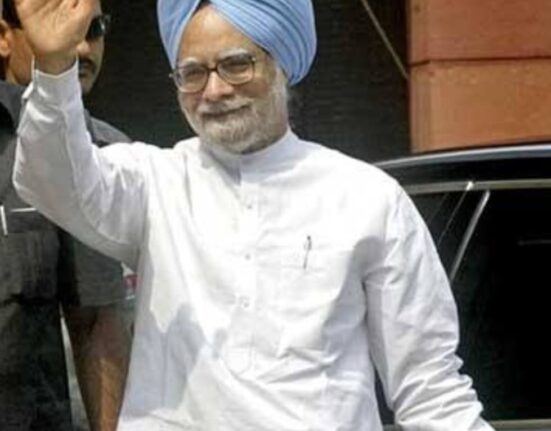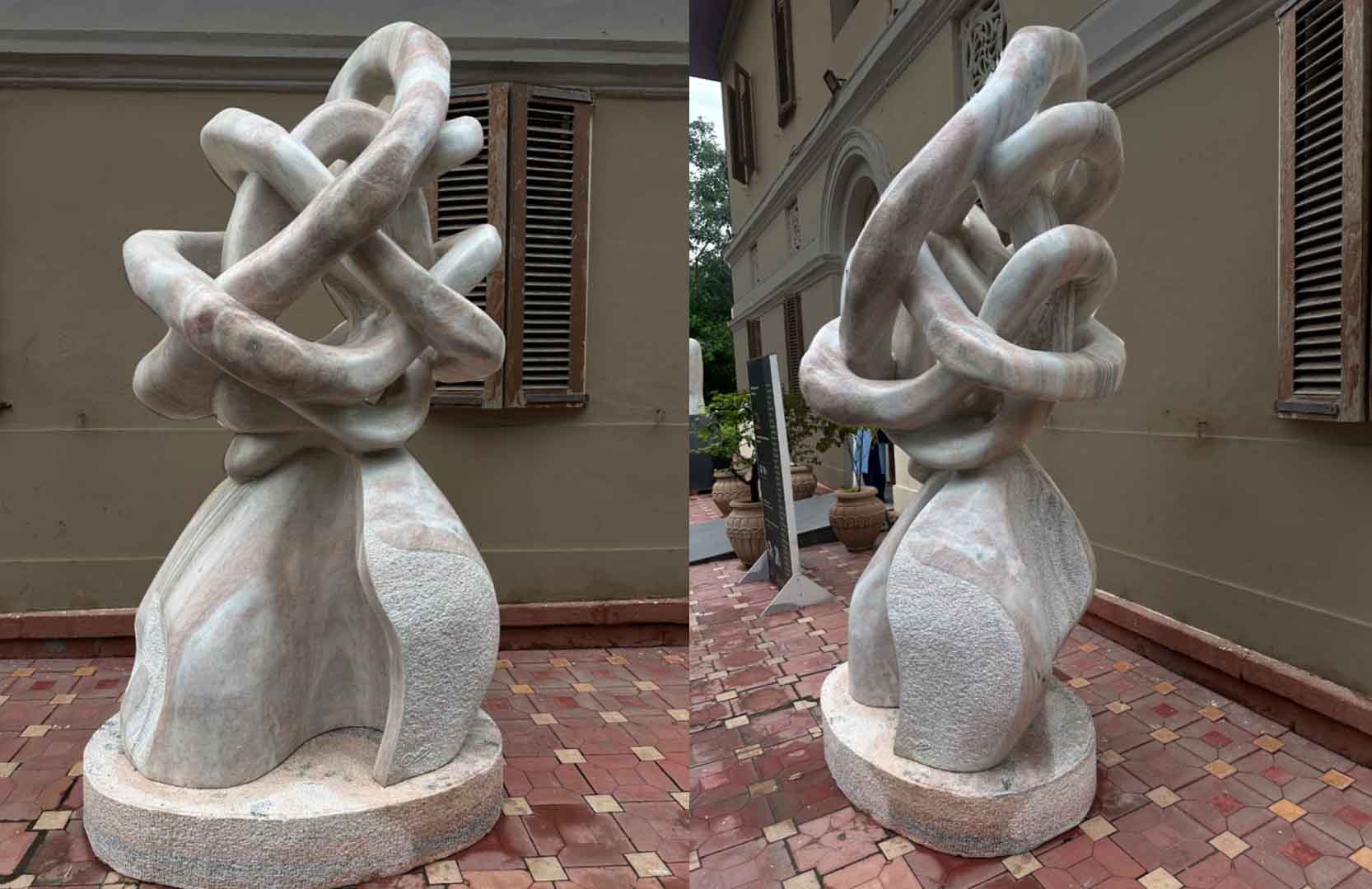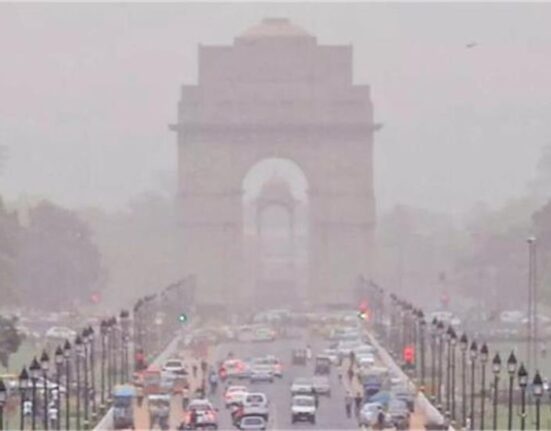The sculpture depicted in the image stands as a remarkable embodiment of fluidity, interconnectedness, and cosmic rhythm. Crafted in smooth, subtly veined Makrana marble, it rises elegantly from a rounded base and expands upward into an intricate network of interlocking loops and curves. The form appears both grounded and ethereal — rooted in the earth yet aspiring toward the infinite. The delicate balance between solidity and movement defines the sculpture’s presence, making it a contemplative piece that transcends its physical boundaries.
From the first glance, the sculpture invites the viewer into a meditative engagement. Its continuous curvilinear motion is evocative of the circle, a timeless symbol in Indian art representing eternity, perfection, and the cyclical nature of existence. The circular motif, devoid of beginning or end, is central to the visual vocabulary of Indian culture — seen in temple carvings, sacred yantras, mandalas, and even in the choreography of classical dance. This sculpture carries that same spiritual resonance: it is at once an object of aesthetic admiration and a metaphor for the universe’s endless cycles of creation, preservation, and dissolution.
The artist’s approach merges traditional Indian philosophy with a modern sculptural sensibility. The loops intertwining seamlessly could be interpreted as the interconnection of all beings within the cosmic order (Rita) — a fundamental concept in Vedic thought. Each curve interacts with the next, just as every element in nature and existence is intertwined with the others, reflecting the principle of Vasudhaiva Kutumbakam — the world as one family.
The surface treatment of the sculpture enhances this dialogue between the tangible and the transcendent. The artist has juxtaposed smoothly polished areas with rough, textured surfaces, perhaps symbolizing the duality of life — the seen and unseen, the material and the spiritual. The polished marble, gleaming softly under light, mirrors clarity, consciousness, and divine illumination, while the rougher, unrefined textures evoke the grounding reality of human experience. This contrast reinforces the sculpture’s philosophical depth, transforming it from a mere object into an allegory of existence itself.














Leave feedback about this